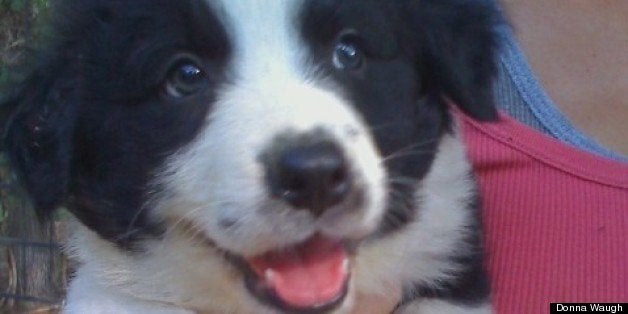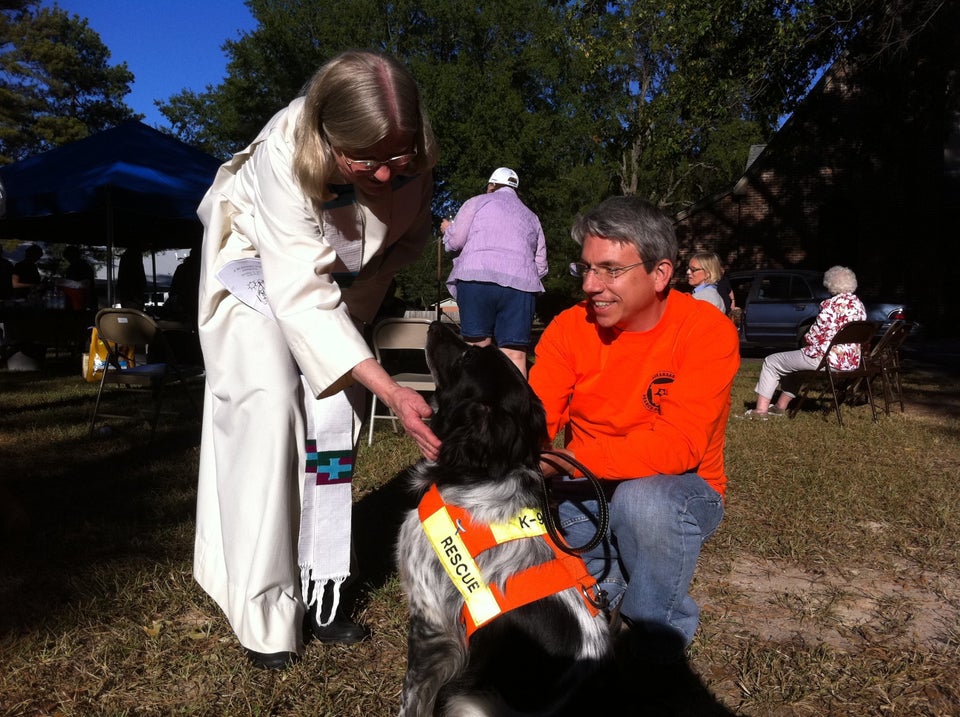
Give Donna Waugh three hours, and a reasonably capable dog, and she'll train it to sniff out cancer.
Waugh, a trainer and president of the Arkansas Search Dog Association, is helping researchers in her area test their hypothesis that search-and-rescue dogs can be used to help detect ovarian cancer, one of the deadliest cancers for women.
But "training" is a misnomer, Waugh warns. Canines come by their detection skills naturally.
"Dogs already understand scent so far beyond what we can possibly imagine," she told The Huffington Post. "They are experts. All we have to do is give them a scent we want them to pick out for us, then reward them immediately when they go to it."
Cancer-smelling dogs have been grabbing headlines recently: U.K. resident Marian Cooper claimed her 6-year-old pug Flo alerted her to a lump in her right breast that turned out to be malignant. And Sharon Rawlinson, also of the U.K., told The Sun that her Cavalier King Charles spaniel kept gently pawing her left breast until she went to the doctor.
But anecdotes are one thing; science is another. The question before doctors and scientists now is whether they can consistently harness and apply dogs' sniffing skills to save women's lives.
"It's not impossible," said Dr. Len Lichtenfeld, deputy chief medical officer for the American Cancer Society. He first heard of dogs identifying cancer back in the early 2000s and was initially skeptical, but forced himself to step back and consider the possible underlying mechanisms.
"Our bodies produce all sorts of things. Some waste materials are excreted through the kidney [or] the liver, some are excreted through the lungs," Lichtenfeld said. "The concept of there being something that a cancer might produce -- a volatile substance [that a dog could smell] -- is perhaps not mainstream, but it's not as far-fetched as it sounds."
At least one of the most promising applications of cancer-sniffing dogs would be for women. Presently, there are no widely-accepted screening options for ovarian cancer, a fact highlighted in a recent U.S. Preventive Services Task Force report. A high-profile group of medical experts who review screening options said there was "at least moderate certainty" that the harms of using currently available options outweigh the benefits.
"A big problem, and part of the reason why ovarian cancer is so deadly, is that in about 75 percent of women, we don't pick it up until stage three or four," said Dr. Alexander Burnett, director of the division of gynecologic oncology at the University of Arkansas Medical School, who is leading the experiment on ovarian cancer where Waugh volunteers. That critical screening void makes the possibility of using dogs to detect cancer especially exciting, Burnett said.
The results of the experiment's initial portion are indeed exciting, but preliminary. A handful of dogs have been successfully trained to detect ovarian cancer, both in live tissues and by using urine samples. But, Burnett admitted, "We don't know exactly what they're smelling."
"We know they're picking up a specific smell, from patient to patient to patient," he said, "but what is it?" By summer's end, he and his colleagues hope to have completed a small blind trial, in which neither the dogs nor the handlers know what the samples are or whether they contain cancer.
Other canine cancer studies have showed promise. A 2011 study out of Germany found that two dogs were able to detect lung cancer from breath samples with relatively high success, while a Japanese study found that a black lab was able to sniff out bowel cancer from a patient's breath and stool samples.
But for all the propitious research, roadblocks remain. An effective screening test needs to be both sensitive -- meaning it can correctly designate a person with cancer -- and specific -- meaning it can correctly identify a person who does not have the disease. Lichtenfeld said the dog experiments are not there yet.
Then there is the practicality of it all. "Any time you're talking about a live animal being trained and being capable of looking at [potentially] millions of tests, the logistics of that would be problematic," he said.
But Waugh says the biggest mistake people make is underestimating dogs, even with a tall order like identifying a life-threatening disease.
"What we find is that people want this to be much harder than it is," she said. "But it just isn't. Dogs understand scent."

